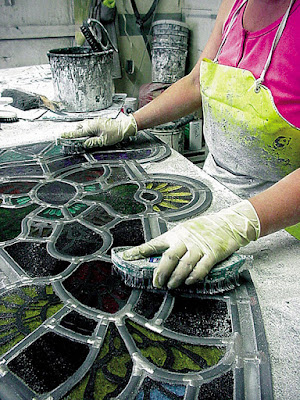- 63/37: melts at 183°C (362°F)
- 60/40: melts between 183°C (362°F) and 188°C (376°F)
- 50/50: melts between 183°C (362°F) and 212°C (421°F)
- 40/60: melts between 183°C (362°F) and 234°C (454°F)
- lead-free solder (useful in jewellery, eating containers, and other environmental uses): melts between 118°C (245°F) and 220°C (428°F), depending on composition.
The 63/37 and 60/40 solders are most often used in copper foil work because of their smaller melting range. This allows the solder to set more quickly than the solders with higher lead content. They tend to give smoother beads also.
50/50 and 40/60 solders are more often used in leaded panel work. Their wider range of melting temperatures allows the solder to spread and become flat.
Other information on solders:
https://glasstips.blogspot.com/2015/07/physical-characteristics-of-solder.html
https://glasstips.blogspot.com/2018/02/lead-free-solder.html
https://glasstips.blogspot.com/2010/01/soldering-ingredients-and-methods.html
https://glasstips.blogspot.com/2015/07/lead-free-solder.html
https://glasstips.blogspot.com/2009/03/solder-alloys-1.html
https://glasstips.blogspot.com/2009/03/solder-alloys-2.html




























